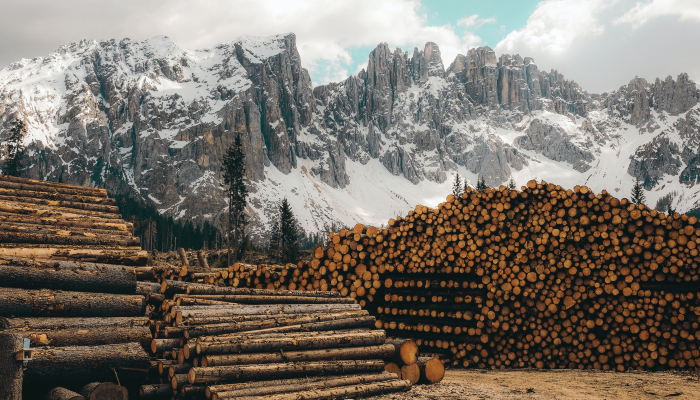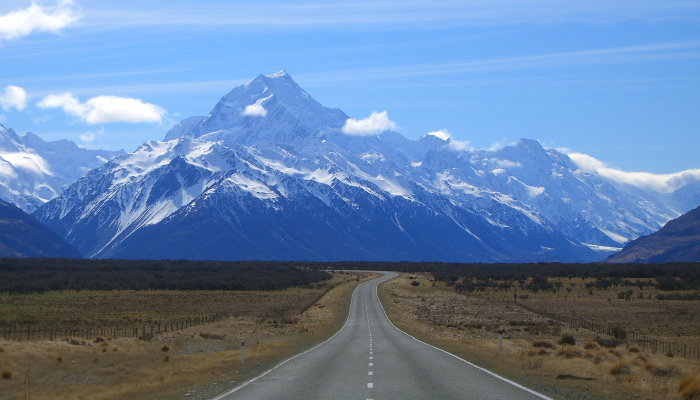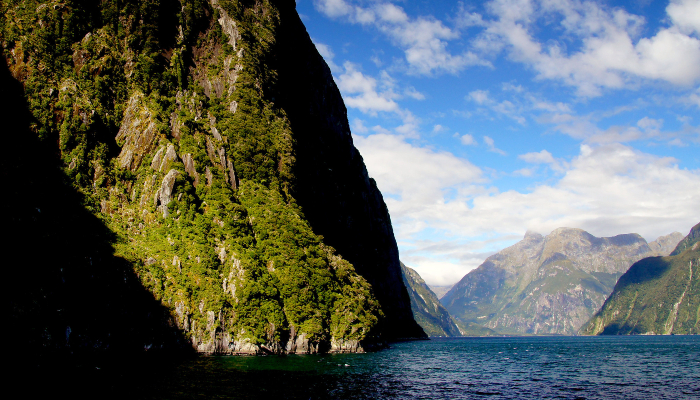Forests (New Zealand)
Where can I find information about New Zealand forests?
(Years 7-10)

Image: New Zealand rain forest by Stefan Karpiniec on Flickr.
Entry last updated: 10/07/25
Introduction
Aotearoa New Zealand's forest ecosystem supports native and introduced trees, shrubs, animals, and birds. Forests might have covered 80% of the land, but this changed when people arrived. Forests were cleared for to make space for homes and farming, and trees were logged for building, making furniture and exporting overseas.
Well-known forests in New Zealand
Waipoua Forest: The largest remaining native forests of New Zealand. Home to Tane Mahuta and Te Matua Ngahere, the largest and second-largest living kauri trees in New Zealand.
Tararua Forest Park and Ranges (Tararuas): One of the largest conservation parks on the North Island.
Puketi and Omahuta Forests: A large native rainforest in Northland. It has lots of native birds, kauri, podocarp, and hardwood trees, and some plants that can only be found in New Zealand.
Kaingaroa Forest: The largest pine forest plantation in New Zealand. It supplies logs to New Zealand and overseas.
Hanmer Forest: In North Canterbury. Some parts were cleared and drained to make space for introduced trees like radiata pine and douglas fir. Since then more native trees were added to make a mixed forest.
Forests in New Zealand
The following websites will guide you to information on the types of forests in New Zealand, their location, use, biodiversity, and conservation and protection efforts.
Te Ara: The Encyclopedia of New Zealand
Te Ara is an excellent starting point for all questions about Aotearoa New Zealand. If we look down to the bottom of the page we can see that the website belongs to the Ministry for Culture & Heritage, so the information is well-researched and reliable.
Go to the Sitemap to find the section on Native Plants & Fungi.
This has information about different types of forest and forest plants like Shrubs and small trees of the forest, Kauri forest, Southern beech forest, and Conifer-broadleaf forests.
Or use the keyword 'forests' in the search bar.
Find information about Forest animals, Forest giants, and logging native forests.
Tips: We like sites like this because they’re reliable. You can tell because of their web address – they have either .govt or .ac, meaning they are from government or educational organisations. They’re also New Zealand sites, so relevant for us.
The Department of Conservation (DOC) is a government agency. Their website has lots of information to suit almost any research question you may have on forests of New Zealand and conservation.
Select the tab Nature.
Browse Native plants to find information on the trees, ferns and plants that are endemic (found only in New Zealand).
Browse Habitats to find out about Forest habitats.
Or look at Conservation status to understand the difference between endangered and threatened species.
Or use search for 'forests' to find information on different forests eg Waima and Mataraua Forests.
Tips: Search words, or keywords, are the most important words in our question. Usually it’s better to leave out small words like ‘the’, ‘a’ and ‘of’ and just choose the main ones, eg forests. We can always change our keywords or add more if we need to.
The role of this department is to provide the government with advice on environmental matters like the value of ecosystems, and sustainability for the future.
Explore the tabs at the top of the page.
The tab What we are doing has information on Biodiversity and the efforts to protect plants and animals.
Enter 'forests' into the search box and find Measuring forest carbon to read about the role of a forest and why forest carbon is measured.
Ministry for Primary Industries
The work of this government department is to help and support New Zealand's primary industries (dairy, fisheries, farming, horticulture and forestry) to improve production, ensure safety and sustainability, and protect these industries from pests and disease.
Go to Forestry from the main page.
Find out about the forest industry in New Zealand, native forests, forest protection, and the role of forests in climate change and Emissions Trading Scheme (EMT).
On this page is a link to Te Uru Rākau, a way to manage and use New Zealand's forest resources in a sustainable way.
Tips: Many web pages have links to further information or to other recommended sites. Following these links is a great way to find out more.
New Zealand Geographic Online is part of EPIC, a selection of databases put together for New Zealand students. You can access magazines dating back to 1989, including current editions.
Enter 'forest' into the search bar.
Read articles like The future of our forests, Pine forest natives, and Kauri.
Tips: To get to the EPIC resources you will need a password from your school librarian first. Or you can chat with one of our AnyQuestions librarians and they will help you online. Some EPIC databases may also be available through your Public Library.
Significance to Māori
Besides spiritual significance, forests are important to Māori for food, medicine and as a source of materials for weaving and building. These websites will help you understand more about the strong relationship between Māori and forests.
Te Ara: The Encyclopedia of New Zealand
Te Ara is a bilingual website, so you can read this information in Māori and English.
Go to Topics and choose Māori life and traditions.
Select the link Te ngahere — forest lore to read about the Māori relationship with the forest.
Or choose to read about Te Waonui a Tāne – forest mythology.
Read Rongoā — medicinal use of plants to understand traditional Māori medicine.
This site also has information about the relationship between Māori and forests.
The tab Te ao Māori The Māori world explains how Māori values are included in decisions concerning the environment.
Tips: A website’s address (URL) can give you a hint about how reliable it is. Look for addresses in the results that include .govt or .edu in the URL. These are quality sites from government or educational organisations.
This website is a partnership between government departments, local councils in New Zealand, and Māori for the protection and conservation of kauri trees.
Go to the tab Kauri Dieback.
Find out about the Significance of Kauri to Māori.
Also find information about kauri dieback disease, how it spreads, symptoms and steps to control it.
Tips: Websites that have .com or .co in the address can have good information, but you need to assess how reliable it is. Check the About us link on the website, if you can find one. That can tell you what the company’s mission and values are.
New Zealand Environmental Guide
This site has information to help people, community groups and businesses to take part in projects about the environment.
Enter 'Māori forests' into the search bar.
Go to the article Māori and Environmental Law.
This article explains the link between Māori and land, water, coasts, oceans, and flora and fauna.
Tips: The websites with org. in the address can have good information but you need to check how reliable this is. This website is supported by the Law Foundation of New Zealand so we should be able to trust the information.
Books
Look for these titles and others on New Zealand forests in your school library or public library:
In the bush: explore & discover New Zealand's native forests by Gillian Candler.
The life-size guide to native trees and other common plants of New Zealand's native forest by Andrew Crowe.
Which native forest plant? by Andrew Crowe.
From weta to kauri: a guide to the New Zealand forest by Janet Hunt and Rob Lucas.
Fight for the forests: the pivotal campaigns that saved New Zealand's native forests by Paul Bensemann.
SCIS no: 5368717
Topics covered
Related content

Deforestation
Where can I find information about deforestation?

Mountains (New Zealand)
Where can I find information about New Zealand mountains?

Islands (New Zealand)
Where can I find information about New Zealand islands?

Conservation (NZ)
Where can I find information about conserving the natural environment in New Zealand?

Sustainability
Where can I find information about sustainability?

Animals
Where can I find information about different animals?
